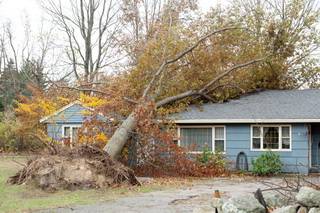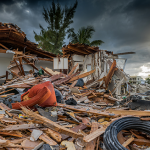While you may not anticipate damage to your home due to high winds, heavy rain, or any other inclement weather conditions, it is always important to prepare for the worst. Heavy winds and rain can cause trees to fall and carry hazardous debris that can break windows, destroy roofs, and cause further damage. The moisture from rain and flooding can destroy important household possessions and can seep into your walls, carpets, and floors, causing permanent damage.
Although it is virtually impossible to completely protect your home from property damage, there are steps to take that can minimize risk. If heavy winds are expected, take the precaution of removing any pieces of outdoor furniture that could potentially become airborne hit your home. Look out for warning signs that indicate a tree may fall on your property and remove them ahead of time. Ensure trees on your property are healthy and sturdy enough to survive high-wind and heavy-rain events.
To best prepare for a hailstorm, it is beneficial to park your car in a garage or under a roof if possible. Damage from heavy rain and flooding can be best prevented through roof maintenance and ensuring the materials are not old and worn. Proper gutter maintenance and cleaning can also be something that is overlooked resulting in the stormwater drainage system not functioning correctly that could allow water to enter a property. Regardless of the severity of the expected inclement weather, installing contemporary building materials that have been designed and tested to be more resistant to these conditions could be the difference between safely riding out a storm or having thousands of dollars of damage occurring to the property.
If property damage occurs, the first step is to document the damage. Take photos and videos and ensure you keep all damaged items rather than throwing things out so the extent of the damage can be properly inspected and assessed. After documentation, property owners should file an insurance claim with an insurer and proceed to implement protocols to protect the property from further damage and document all expenses and activities. Engineering inspections are conducted during the claim process to verify and document the damage to the property and help the claim professional proceed with all information needed. CED’s approach to forensic engineering allows for far more precision in uncovering the true causes or contributing factors of an incident.
For both commercial and residential property damage claims, recovery can be a long, drawn-out process. A complex claim situation is best resolved after a careful, expert, and objective evaluation of the incident. A forensic engineering analysis can provide valuable information allowing for efficiency in navigating the claim process and in some instances can provide scientific justification for recovery of paid claims. CED's experienced team of experts can investigate and analyze all possible factors to find the right answers for your situation.






